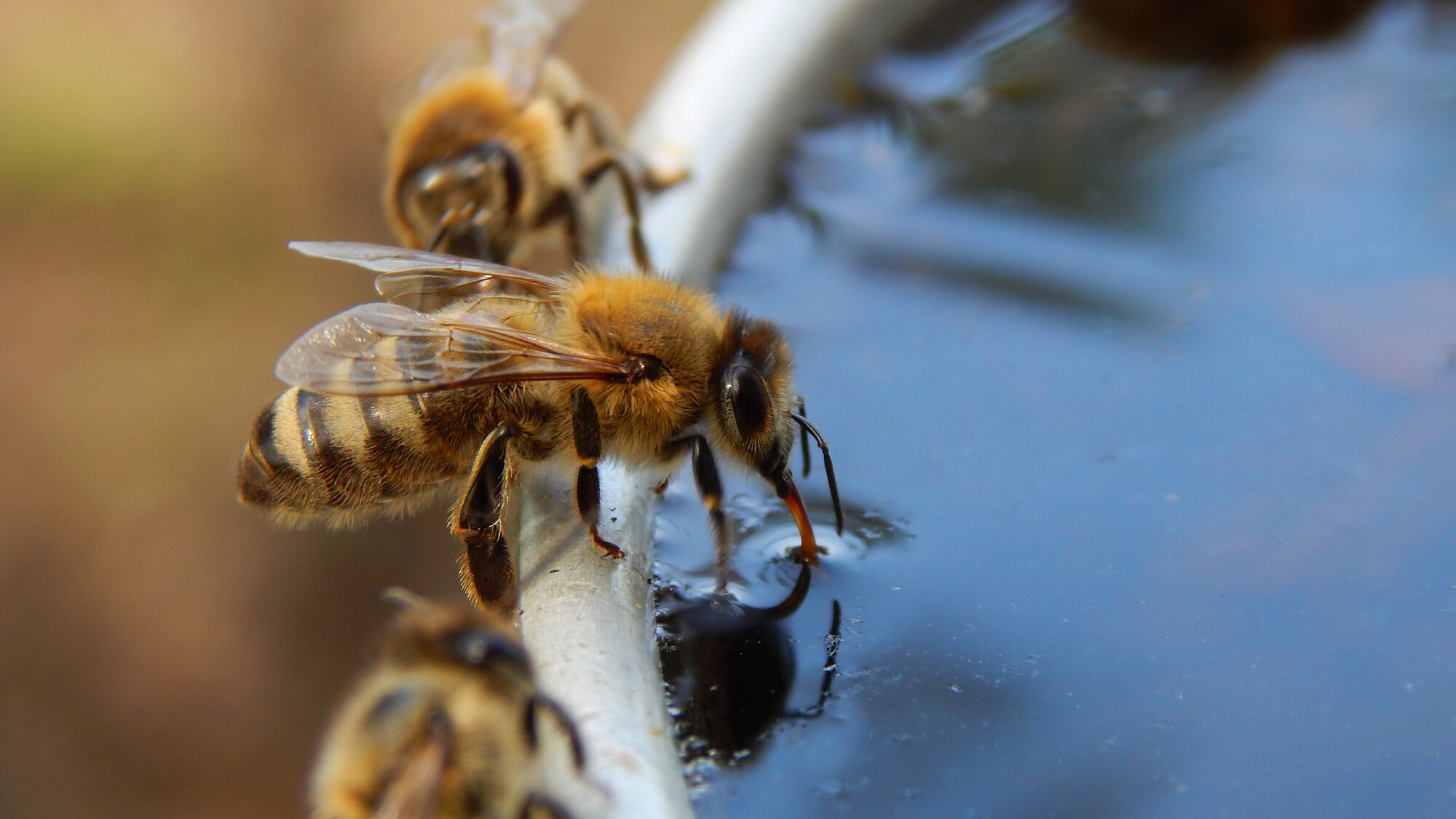Macadamia farmers love bees! They are an essential part of a macadamia orchard, with an important role in producing the creamy nuts we love.
Step into any macadamia orchard in springtime and you will hear the hum and buzz of bees hard at work pollinating the delicate macadamia flowers so they will become nutritious nuts. If it weren’t for the industrious work of this important insect, we wouldn’t have macadamia nuts come harvest time.
The macadamia nut is actually a seed and the fertilising work of bees is essential for the nuts to form.

Of course, it’s not just macadamias that need bees. Bees are essential for producing many other nuts, as well as fruits, vegetables and herbs. In fact, around one third of the food we eat relies on these little critters.
Once the trees are in bloom, bees visit the flowers in search of food. Bees feed on nectar for energy and pollen, which provides protein and other nutrients. Their foraging transfers pollen from one flower to another and facilitates fertilisation, which results in fruits and seeds.
Fast fact: Did you know it takes around 140 bees to produce one kilogram of macadamia nuts!
World Bee Day
World Bee Day on 20 May is an important day to celebrate the essential role that bees play in our ecosystem and to consider ways to further support these vital creatures.

To celebrate World Bee Day we’re sharing our best tips for creating a bee-friendly home and garden.
1. Set up a bee friendly water source
Like all living creatures, bees need water to survive. Honey bees use their proboscis, a thin, straw like tongue, to slurp up water. However, bees cannot swim so they require a water source that is ‘bee accessible’. Something with a shallow edge is ideal. A birdbath or shallow dish, preferably with pebbles around the edge so they can easily drink the water without being submerged, works well. Once a bee finds a water supply, they will return to it regularly.
Bees also typically prefer ‘dirty’ water because it is richer in nutrients. They often drink from ponds, gutters and puddles. Good news for gardeners: you don’t need to keep your birdbath or bee dish clean!

2. Plant year-round food sources
Bees need food throughout the year, so it’s important to plant a variety of flowers that bloom at different times. Diversity is the key here. Choose a range of different types of flowering trees and shrubs, and check you have a year-long spread of flowers. If you are buying from a nursery, you will be able to check the planting guide for this information. It’s also good to make sure you are planting them in the right conditions, as some plants won’t flower if they don’t get enough light.
3. Go colourful!
Did you know bees have colour preferences when it comes to flowers? They can’t see the colour red, but they can see ultraviolet light. Stacking your garden with a range of blue, purple, yellow and white flowers will attract bees. Native bees generally love native plants, so make sure you plant natives to support native Australian pollinators too.

4. Minimise chemical use
Pesticides and herbicides can be harmful to bees and other pollinators, so try to avoid using these chemicals in your garden. Instead, opt for natural remedies, many of which can be made in your kitchen at home without special ingredients or equipment. Garlic, chilli, olive oil, bicarb, salt and dishwashing detergent can all treat pests in the garden. Check online for recipes to know which treatment to use for which pest.
5. Be mindful of mowing
Bees and other pollinators need grass and other plants to grow and bloom. Avoid mowing your lawn too often, or leave a section of your lawn unmowed to allow wildflowers and other plants to grow. Letting herbs go to seed will also allow them to flower, which will attract bees into your garden.

6. Install a bee hotel
Not all bees live in hives. Some are solitary. Bee hotels (sometimes called ‘insect hotels’) provide shelter from extreme weather and serve as a safe place for bees to hatch their young. They can also provide a safe place for solitary bees to nest. Having a bee hotel will improve pollination in your garden. You can purchase a bee hotel or make your own by drilling holes into a piece of wood or bamboo.

7. Get involved in restoring native bushland
Many bees rely on native plants for food and habitat, so getting involved in restoring native bushland can have a positive impact on local bee populations.
8. Encourage friends and neighbours to plant for pollinators too
Spread the word about the importance of bees and encourage others to plant bee-friendly gardens in their own yards. This is also a way to create––or should we say ‘pollinate’––connections in your community! By working together, we can create a network of bee-friendly habitats that support these vital pollinators.
How will you be bee-friendly this World Bee Day? Buzz on over to our Facebook page and let us know!












